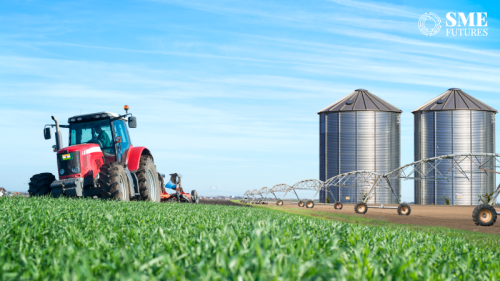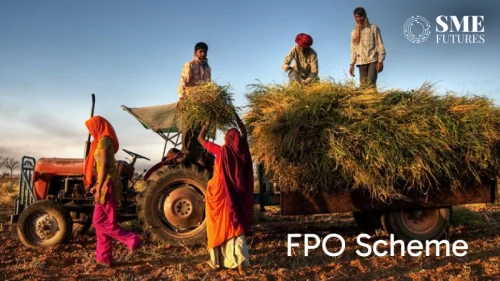2022 has been a challenging year for the global food system, to say the least. It uncovered several structural weaknesses in the wake of challenges such as extreme weather events, supply-chain disruptions, geo-political tensions, international conflicts, and growing food wastage. The year also exposed our inability to manage global hunger and food security, reversing the progress made over decades of efforts.
The enormity of the challenge is evident from the fact that food security, climate-resilient agriculture, and agri-financing were the central theme of discussions at the recent COP27 event in Egypt and the G20 Summit in Indonesia.
In this context, we expect some significant agri-food and agritech industry trends to accelerate in 2023
Agri-financing and sustainability investments will skyrocket
Expect investments in sustainability projects to continue to see momentum. The United Nation noted recently that the world has not been doing enough to help poorer nations withstand the effects of global warming. Climate adaptation finance has been woefully underfunded. This has started to change in 2022 and will accelerate in 2023.
Also Read: International regulation needed for crypto activities: RBI
We will see more and more of PepsiCo’s recently announced $1.25 billion 10-year Green Bond to fund eligible Green Projects, The Bill & Melinda Gates Foundation’s pledge of $1.4 billion to help smallholder farmers in sub-Saharan Africa and Asia build climate resilience into their work practices, and the U.S. Department of Agriculture’s plans to invest up to $2.8 billion in 70 selected projects under the Partnerships for Climate-Smart Commodities plan. We expect the private sector’s contribution will see new heights in 2023.
Accelerated digitisation of agriculture for maximising visibility & transparency of food systems
Digitisation of agriculture is one way to reduce the climate impact of farming as well as the impact of looming economic slowdown in certain regions. We expect enterprises and governments around the world to accelerate technology investments in agriculture – leveraging advancements in cloud computing, earth observation, remote sensing, data, and AI/ML models – to help the sector unlock new possibilities while solving real-world agricultural problems. This can significantly boost food production, improve profitability and reduce operational costs which are crucial in a downturn.
There will be a strong focus on maximising the visibility and transparency of global food systems. This means combining expertise in multiple areas such as data science, digital applications, GIS, agri-science, agronomy, AI/ML models, weather data, IoT, and drones, among others to deliver better visibility and intelligence around the agri-production lifecycle. Organisations will be compelled to push the boundaries of science and technology to find meaningful solutions to not only future-proof agriculture but to safeguard the subsistence of the human race.
Enhanced focus on smallholder farmer empowerment
There has been a massive focus by private players, governments, and international organisations/development agencies to build farmer-centric solutions over the past couple of years. We expect this trend will significantly pick up pace in 2023 and beyond. Of the estimated 580 million farmers in the world, a staggering 500 million are small-holder farmers who are not easily accessible.
Also Read: Corporate tax collection to GDP ratio exceeds by 3% in FY22
Global food-system stakeholders have realised that meaningful and enduring transformation of agriculture is not possible unless smallholder farmers at the grassroots level are trained and enabled to adopt smarter, more efficient, and sustainable ways of farming. Digitisation and intuitive, inexpensive, and easily accessible technology can go a long way in making this happen.
The Government of India’s Kisan Drones project to use drones for crop assessment, digitization of land records and spraying of insecticides to boost productivity is a great example of making technology more easily available for small farmers. Farmer empowerment at the grassroots will take centerstage in boardroom conversations of agri-businesses next year.
Building food self-sufficiency and reducing food wastage
Nations will take concerted measures to build self-reliance and self-sufficiency in food production to feed their citizens. The Covid-19 pandemic in the last 2 years and the geo-political conflicts in 2022 were an eye-opener and drove home the fact that creating a self-reliant food system is a critical and strategic imperative for nations.
Very high dependence on a few markets for major crops, staple foods, and raw materials like pesticides and fertilisers opens up governments and whole populations to the risk of disruptions in food production and the threat of food insecurity. Governments will step up large-scale adoption of technology and data to help their economies to build self-reliance by increasing productivity, efficiency, predictability, and sustainability in their food-supply systems.
Reducing food wastage will become a priority for economies as the world grapples with the twin challenges of food insecurity and economic instability. Today, one-third of food produced globally is either lost or wasted at different stages – right from the field to packaging, warehousing, and distribution.
Also Read: GST collections up by 15% in December ’22
Technology will play an increasing role in helping to check food waste. For example, soil sensors can help monitor soil health to prevent the loss of crops in the field. Digital solutions can monitor the crop lifecycle and send real-time advisories to growers that can help them to reduce wastage in the cultivation process. IoT-enabled connected farming solutions and digital dashboards enable farmers, suppliers, processors, and retailers with end-to-end traceability of food produce/commodities which in turn cut food loss in the supply chain. There will be widespread adoption of digital crop monitoring and smart supply chain models to minimise food loss and wastage across the food value chain.
Regenerative agriculture to reduce soil degradation
We expect more investments to happen in soil conservation and biodiversity in the next couple of years. Good soil health is at the root of productive agriculture. A lot more needs to be done on this front to check soil degradation, and maintain and improve soil health. Farmers need to be guided by data-driven decisions on the optimal use of water, pesticides, and agrochemicals and regenerative farming practices that can nurture soil health. Policymakers, agrochemical companies, technology players, and NGOs will come together with new initiatives and investments to safeguard the soil.
Conclusion
As we grapple with numerous challenges, organisations and countries need to make quick and take decisive actions backed by the right investments to enable sustainable living and protect our planet at large. 2023 could very well be a make-or-break year for us to decide our fortunes. We shouldn’t let the food system fail and the time to act is now!











